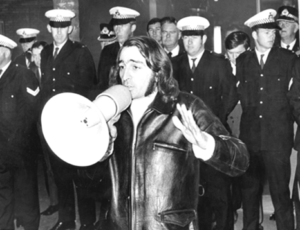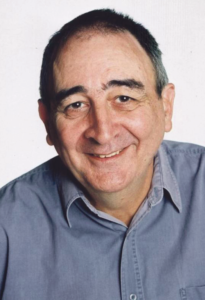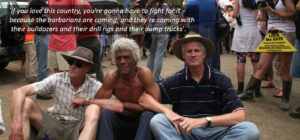
Marihuana Weirdo Remembrance Day
The 10th August 2013 will mark the fiftieth anniversary of Brisbane’s first marijuana arrest, the marihuana weirdo raid, which was announced in a lurid story, “Marihuana seized by police in swoop on weirdos”, which was the front page story on 11th August 1963 for Brisbane’s Sunday Truth.
The marihuana weirdo raid marked the beginning of fifty years of marihuana persecutions, police corruption and the misuse of the drug laws. It is something to condemn but also to acknowledge and commemorate.
The back story to the Marihuana weirdo raid is examined by Steven Bishop in his book The most dangerous detective. What follows is largely excerpted from this book, which I recommend as a fascinating history of Queensland’s Rat Pack, and Queensland very own killer cop.
– Dr John Jiggens.
A lie called the Truth
In August 1963, the corrupt practices of Queensland detective and future Rat Pack leader, Glen Patrick Hallahan, had drawn the attention of the Appeal Court. An appeal by Garry Campbell, one of Hallahan’s victims, was due to come before three of the state’s most senior judges. Hallahan’s method in obtaining convictions was to threaten those he arrested that he would load them up with far more serious offences unless they pleaded guilty. If they pleaded guilty, he promised to go easy, and tell the judge they helped him in his investigations. Hallahan invariably promised he would put in a good word for them with the judge and they would pay only a small fine. Campbell’s appeal was based on the claim that Hallahan had blackmailed and bullied him into pleading guilty.
Hallahan wanted a major advertisement for himself before the appeal court sat in judgement on him, and he contrived with the Sunday Truth’s crime reporter, Ron Richards for a story of a raid on a gay party where it was expected that one of Brisbane’s top television personalities would be attending: this would become the marihuana weirdo raid.
The raid took place at midnight on a Friday night, which meant that no one else would be able to beat Truth to the story. As Saturday August 10 approached, Ron Richards and a photographer waited outside a Herston address.
Veteran journalist Steve Bishop described the resulting marihuana weirdo raid story as “a Hallahan extravaganza across the whole of the front page and page 3… the front page carried a photo of a besuited Hallahan, wearing a thick sweater under his jacket to keep out the cold, with “a firm grip on a male strip tease dancer being bundled from a weirdos’ party at Herston. The dancer appeared to be naked apart from a tiny towel that might have been the final part of his act. The headlines were: Brisbane rocked by vice exposure; marijuana seized in swoop by police on weirdos; television personality questioned.”
The Truth version of the marihuana weirdo raid was, “Right on midnight police rushed in to a unit at Herston where they found a near naked man entertaining the “potted” guests with a male strip-tease.” What was left unsaid in the Truth report was that the raid was a set-up from the start, staged by Hallahan and his friends in the CIB for the benefit of beat-up expert Ron Richards to whip into Truth’s fantastic marihuana weirdo concoction. Hallahan’s friend Billy Phillips organised the party; Hallahan organised the raid and probably the marihuana. Ron Richards did the rest.
There is a quote famously attributed to Rupert Murdoch by WA Premier Charles Court. Reputedly, Murdoch told Court, “You can have a headline a day, or a bucket of shit!” The marihuana weirdo story was Hallahan’s headline. By pulling some poor soul from a Herston party, Ron Richards contrived to transform Glen Patrick Hallahan into a detective hero, saving Brisbane from the scourge of drugs and vice.
The whole of page 3 was dedicated to the story, with four more photos of police leading “weirdos” away. According to the Truth, “Some of the men called each other by women’s names like Rosa, Gypsy, Molly and Roma… Police say the seizure of the marihuana at the Herston party is the first breakthrough in proving their belief that sex drugs are being used on a wide scale at Brisbane vice parties.”
The biggest photo featured another close friend of Hallahan and Richards, Detective Don ‘Shady’ Lane, future corrupt Bjelke-Petersen minister and jailbird. Hallahan also brought along in his raiding party his accomplice in the Sundown Murders frame-up, Norm Bauer, head of the CIB, who would succeed Bischof as police commissioner. The photos of the marihuana weirdo raiders portray a glittering parade of future stars; a cabinet minister, a police commissioner, and a chief investigator for Suncorp Insurance.
Next Friday, Hallahan was in court as the three senior judges heard the appeal from Gary Campbell. Campbell’s lawyer argued that Hallahan had blackmailed Campbell into pleading guilty. The judges reserved their verdicts to a later date, which meant there was time for one more pro-Hallahan beat-up in the Sunday Truth before the verdict was delivered in a page 5 story called: Dramatic sequel to city sex raid: Drug ring forced into “smoke”.
As Ron Richards furiously whipped the ingredients together, ace detective, Glen Hallahan, was now “smashing the dope-running gangs” through his undercover investigations into the drug trade. The story began: “Australia’s top gangland drug traffickers have gone into hiding following weeks of undercover investigation by Brisbane and Sydney detectives. The first breakthrough in smashing the dope-running gangs follows directly on the dramatic police raids on a marihuana party in the Brisbane suburb of Herston on August 10… Last week one of the guests at the Herston party was dramatically arrested at Eagle Farm airport by Detectives G P Hallahan and R Price as he was about to leave for Melbourne. He was fined 100 pounds after he told stipendiary magistrate Mr Baker that he had given Detective Hallahan valuable information on the source of the sex drug in Sydney.”
Like most of the Truth’s marihuana weirdo make-believe, this was thousands of light-years from the truth. Hallahan, the great anti-marihuana crusader, was one of Brisbane’s few potheads in 1963. His then confidente and lover, Shirley Brifman, recalled how Glen ‘hit the pot’ in this period. Far from smashing dope-running gangs, Hallahan would move on to direct them. In the 1970s, John Milligan, a major heroin trafficker, would tell the Narcotics Bureau he was terrified of Hallahan, who was bankrolling his heroin importations. Milligan told the bureau that if he talked his life would be in danger. He informed them that Hallahan had claimed that he had already murdered a prostitute named Shirley Brifman.
Uninfluenced by Ron Richards and the Truth’s promotion of Hallahan, the Full Court delivered a damning verdict on Hallahan. Justice Stanley, who had already studied Hallahan’s behaviour in at least two cases, took the lead in reporting:
“Campbell alleges he was induced to plead guilty to vagrancy in these circumstances: Detectives took him away from the place where he was employed and searched his flat for blankets, sheets and pillow slips alleged by them to be missing from premises formerly occupied by him. Not finding any such articles, Hallahan said to him: “If you haven’t got them, you know who has got them and we will charge you with having house-breaking instruments. We’ll load you right up and make sure you get put away.” Campbell replied: “I don’t know where the blankets and other things are.” Hallahan said: “How much money have you got?” Campbell replied: “About four or five shillings.” Hallahan said: “We will charge you with vagrancy.” Campbell alleges he then told Hallahan about his employment history. “He had, in fact, obtained part-time employment at the Top Cat Sound Lounge, 74 Elizabeth Street, Brisbane. He was required to work each Friday and Saturday evening, being paid three pounds per night. He worked on Saturday, June 22, and he was at work at that address on Friday June 28 when taken away by Hallahan. “Campbell alleges that having told Hallahan this, Hallahan said: “If you don’t plead guilty we will go to your flat with house-breaking house-breaking instruments and then charge you with having possession of them. You’ll get at least 12 months’ imprisonment. But if you plead guilty, you will get out of the vagrancy charge.” He alleges Hallahan also told him what to say in court and said: “If you say what I tell you, I will not rubbish you in court. If I get you out of this charge I want you out of town by Tuesday. In truth, Campbell was in work and taken away by the police while on duty at his place of employment.”

The misnamed Sunday Truth was the megaphone for the Rat Pack, glamorising crooks like Hallahan.
COLIN JAMES BENNETT AND THE NATIONAL HOTEL INQUIRY
Colin Bennett, born on 10 May 1919 in Townsville, died in 2002, was a lawyer and parliamentarian who was one of the Rat Pack’s few foes, and their most powerful adversary.
Speaking in the Queensland Parliament shortly after the weirdo raid and the court’s verdict on Hallahan, Bennett told how the Full Court of Queensland had found “that the top glamour detective of Queensland was guilty of perpetrating a fraud on one of the courts”, yet Commissioner Bischof was supporting Hallahan. Bennett said:
“That is perhaps one of the most serious offences that anybody in Queensland could commit, and it is even more serious when it is committed by an allegedly trusted police officer. But, lo and behold, the Commissioner of Police does not accept the unanimous decision of the Full Court and will have the decision investigated departmentally. What a shocking impertinence from any public servant or any other person in the community. There have been many occasions when this Commissioner has suspended policemen and dismissed them. On this occasion… he does not even suspend the police officer concerned. What is more this particular officer glamourises himself by dragging some poor individual, draped only in a little towel, not arrested – he still has not been charged – yet this officer assaults him by dragging him from private premises. No action has been taken and I know none will be taken. He drags him out from private premises and either arranges or had pre-arranged for a weekend newspaper to make an incursion into this individual’s privacy and dignity by having a photograph taken.”
On October 29, 1963, Bennett rose again to condemn Commissioner Bischof and the Rat Pack of corrupt detectives, who were his bagmen: “I propose to concentrate my attention on the police department and the police force of Queensland,” he said, before imparting some advice to the Commissioner and his friends: “I do not wish to dally too long on this subject, but I should say that the Commissioner and his colleagues who frequent the National Hotel, encouraging and condoning the callgirl service that operates there, would be better occupied in preventing such activities rather than tolerating them.”
Sunday Truth commented on its front page: “The campaign Mr Colin Bennett MLA is waging against the police commissioner Mr Bischof is now completely out of control and in the public interest the State Government can move only one way. It must order an immediate Royal Commission.” The reason it gave for needing an inquiry was:
“The facts are that the honour and integrity of the Queensland police commissioner have been attacked. His name has got to be cleared.”
Thanks to the urgings of the Truth for the government to counter the statements in Parliament by Bennet, the National Hotel Inquiry would be announced shortly thereafter, with its terms of reference limited to enable Justice Harry Gibbs to clear the reputations of the crooked Commissioner Bischof and his ratty friends.
Most of this (with a bit of editing and rewriting) from:
Bishop, Steve . The Most Dangerous Detective: The Outrageous Glen Patrick Hallahan Kindle Edition. $12.95
More info on the finding against Hallahan
The three judges constituting the appeal court, Stanley, Mack and Wanstall, did not believe Hallahan’s denial that he was blackmailing those he arrested into pleading guilty. The allegations were he would threaten to load them up for a far more serious crime if they didn’t plead guilty; or he would threaten to detain them over the weekend and not notify their families. The judges were so concerned by his behaviour that they laid down a course of action that all magistrates should follow if a defendant appeared before them without a legal representative and pleaded guilty. They said: “The magistrate should not only inquire whether anyone connected with the police has made any suggestion that he should plead guilty and advise the accused to plead not guilty unless he receives from the accused a prompt and convincing disclaimer.
The case went into the legal lexicon as ‘Hallahan v Kryloff, ex-parte Kryloff’ and has been frequently quoted in Queensland judgements ever since.
Another example of Hallahan’s technique in gaining guilty pleas concerned a man who pleaded guilty to a crime which was never even committed. Writes Bishop:
“So why had Cavanagh confessed to a crime that not only did he not commit, but which had never occurred in the first place? He told his solicitor that on the Saturday morning he had been threatened by Hallahan: You can either plead guilty, go before the court today and be home with your wife this afternoon or we’ll throw you in jail until you come clean and your wife will be worried sick at home. “I know I pleaded guilty but I challenge anyone else placed in similar circumstances to do anything different,” said Cavanagh. “I’d been taken away by the police and faced with a weekend in the watchhouse if I pleaded not guilty.”
Bishop, Steve (2012-11-06). The Most Dangerous Detective: The Outrageous Glen Patrick Hallahan (p. 63). Kindle Edition.








